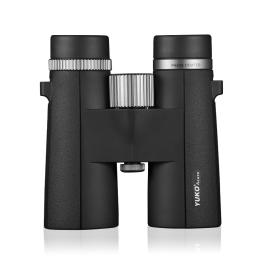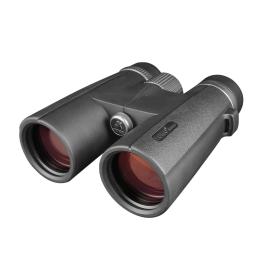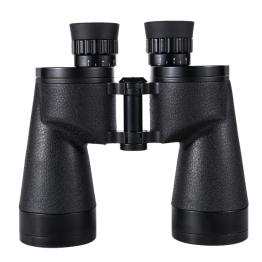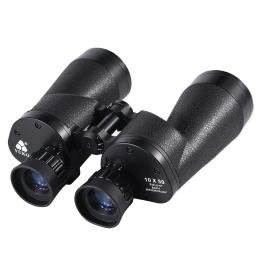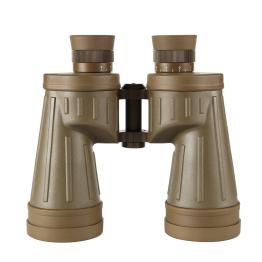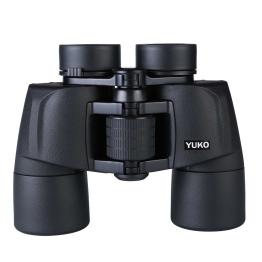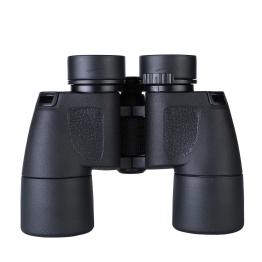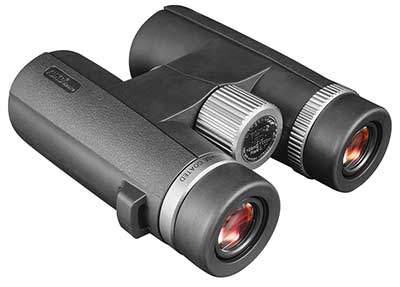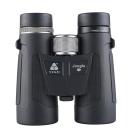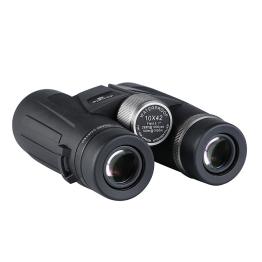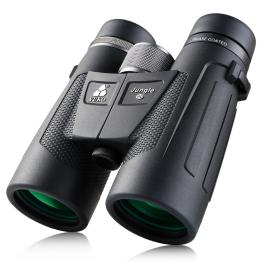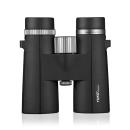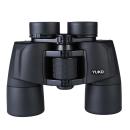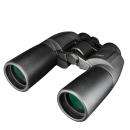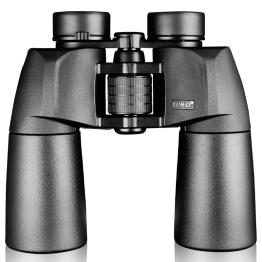Tips for using binoculars for birdwatching

Binoculars are some kinda must-have for birdwatchers. Binoculars reveal the most muted colors, patterns and textures, you can zoom in to see a bird's facial details, head positions, personality or even emotions. Using a good pair of binoculars for birdwatching simply transforms your birding experience into something glorious and magical.
Using binoculars for birdwatching "seems" SO easy, but believe me it is not. We've seen people getting started on birdwatching, trying out on binoculars, and end up with a complete standstill. "There's something wrong with these binoculars/ my eyes", they say.
The truth of the matter is that learning to use binoculars is not easy, it can be really difficult at first. Trying to stay focused on the bird, and then bring the tool up to your eyes is not the easiest thing to learn.
So, here come some essential tips for using binoculars for birdwatching:
1) Get the "right" binoculars
Binoculars are designed with different features and specs for different purposes, you need to choose carefully to find the best binoculars for birding. Here is a binoculars buying guide that will help you to understand the features and specs, and an article on choosing binoculars for different outdoor Activities.
Also, checkout our best birding binoculars:
2) Get set up
The first thing to do would be adjusting the eye cups. If you wear glasses or sunglasses, screw the eye cups all they way in; if not, screw them all out.
Then adjust the inter-pupillary distance, i.e., the distance between the two barrels to make it fit your eyes. Pull the two barrels apart as far as they go, bring the binoculars up to your eyes, while grasping the barrels firmly with your hands, and slowly squeeze the barrels closer together until you see only one image (a perfect circle) through both eyes.
When all these set up, rest the binoculars on your brow ridge or the top rim of the frames if you are wearing eye glasses.
3) Get focus
Just like cameras, you always need to focus to get the image sharp and clear.
First use the binocular's central focusing knob to focus both barrels at the same time. Focus knob is usually placed in the center of the binoculars between the two barrels. Look at something stationary in the middle distance and move the wheel to bring the object into focus. Note that the focus is not everlasting - Even the smallest movement can put an object out of focus, so you will need to keep adjusting the focus as you move your eyes from one object to another.
Adjust diopter: diopter ring is usually placed on the right-hand eye piece. It is used to compensate for the differences between your eyes. To adjust the diopter, put a lens cover over the right barrel. Keep both eyes open and adjust the focus knob till you get the clear and sharp image. Next, put the cap on the left barrel and, keeping both eyes open, use the diopter ring to bring your view into sharp focus. It needs adjustment only once.
4) Get the right posture
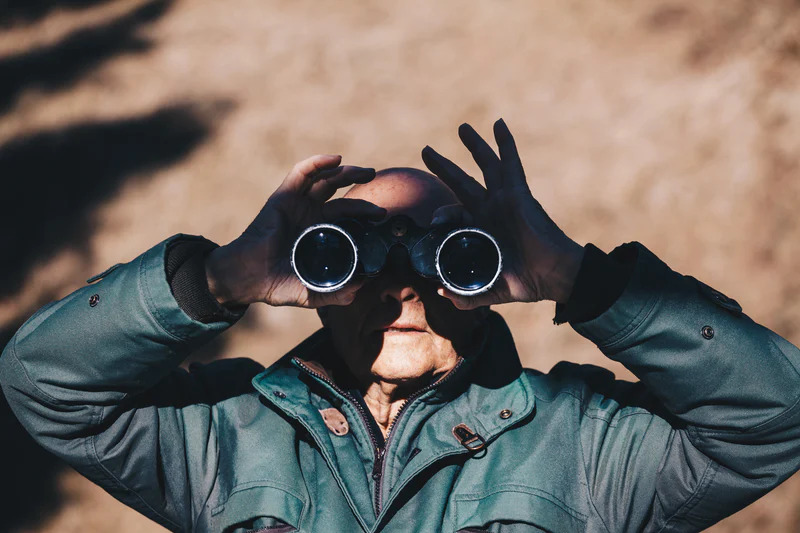
You may soon get fatigued and your muscle gets sore when using binoculars and looking up for long periods. Finding and using a comfortable yet stable posture when holding binoculars is really important to help with this.
Some people hold binoculars with only their thumbs underneath the barrels. This posture gives little support as as the thumbs act as fulcrums for the binoculars to teeter on. A more solid posture is to cock your wrists so that the binocular barrels rest on the heels of both the thumbs and palms, which create a stable platform to support your binoculars.
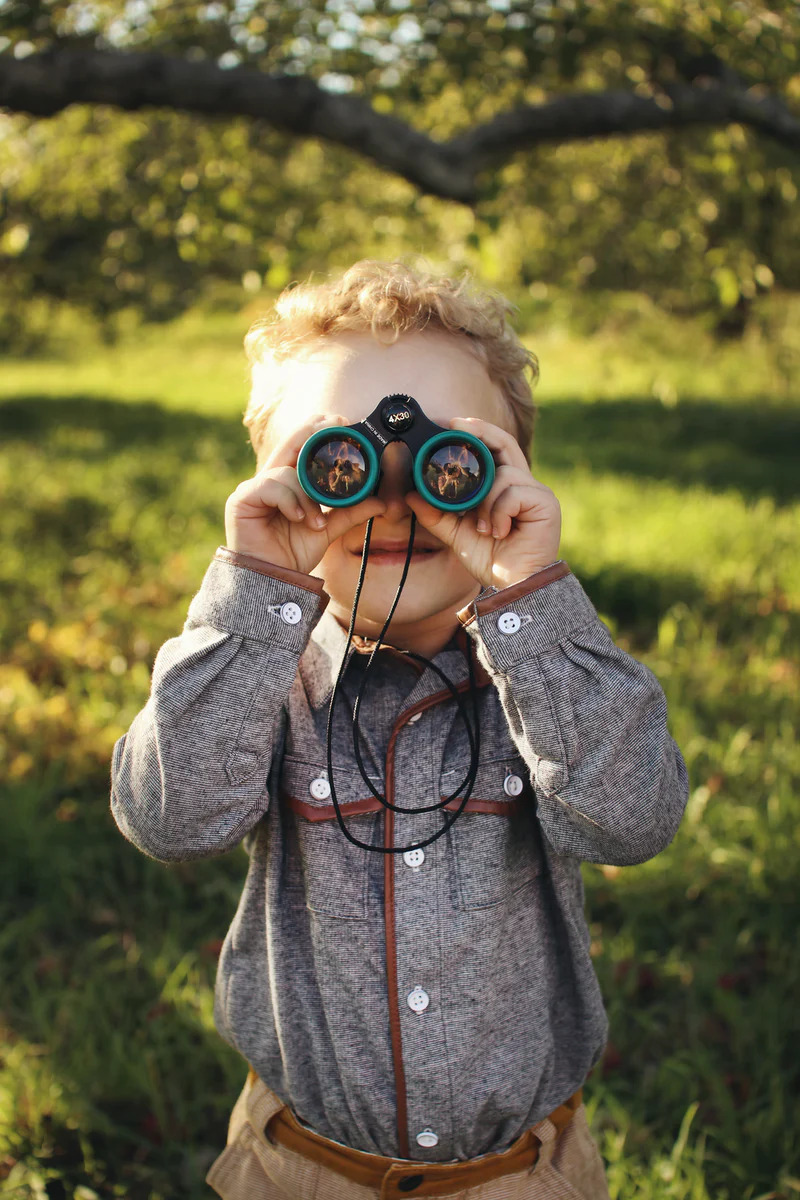
When looking straight up, stand with your elbows fully extended; while when looking ahead, you may find it comfortable to tuck the elbows in slightly to the body.
It is always great if you can find something to support your binoculars or arms, a fence or car roof for example. Here is a terrific article by Stephen Tonkin showing some useful skills on supporting your binoculars.
5) Aim your target
It is not easy to locate a subject in the field of view, especially if it is something like a small fast moving bird. There are a few things that you can do to help with this:

- Line up: turn your whole body, including your head and your feet, up to the face of the bird, freeze your body and stay still. It makes spotting more difficult if your body is out of balance.
- Hold your binoculars correctly as we mentioned above. It will make it easier to locate and stay with your target.
- Keep your eyes on the bird as best you can. Don't loose it.
- pull the binoculars up to your eyes. Now if you have followed the previous steps, you will see the bird right in your field of view, without having to look around for it.
This is not as easy as it sounds, it’s best to starting with birds that remain mostly still for long stretches, good examples include herons, hawks, woodpeckers and birds at bird feeders, and you might need to practice on until it all becomes a natural movement and over time you will do it without even thinking about it.
Related products
Multi-coated lenses All air-to-glass surfaces are coated with multiple layers of anti-reflectivity coatings so that the maximum amount of light passes through the glass to the eyes and true colors can be revealed. Phase Coated BaK4 Prism The prisms inside the JUNGLE binoculars are made of high quality BaK-4 glass, phase coated, so that more light is reflected off their internal faces and passes through to the eye. Taken together, the fully multi-coated lenses and BaK-4 prisms maximize light transmission for the remarkably bright, highly detailed images. φ21mm large Ocular LensesPresenting larger Field of View, and brighter images in twilight condition. Sharp image with Low Chromatic aberrationThanks to the premium Bak4 prism and high quality coatings, the world beyond your sights can be brought to you just AS THEY ARE. Nitrogen FilledYuKo JUNGLE binoculars are filled with high-purity dry nitrogen gas to prevent internal fogging of lenses, protect the binoculars from water, and then to withstand all-weather environment. The Best Binoculars Stand up to any situation, SERVE FOR EVERYTHING! Bird Watching Animal Watching Nature Viewing Sporting Games ..
Add to CartMulti-coated lenses All air-to-glass surfaces are coated with multiple layers of anti-reflectivity coatings so that the maximum amount of light passes through the glass to the eyes and true colors can be revealed. Phase Coated BaK4 Prism The prisms inside the JUNGLE binoculars are made of high quality BaK-4 glass, phase coated, so that more light is reflected off their internal faces and passes through to the eye. Taken together, the fully multi-coated lenses and BaK-4 prisms maximize light transmission for the remarkably bright, highly detailed images. φ21mm large Ocular LensesPresenting larger Field of View, and brighter images in twilight condition. Sharp image with Low Chromatic aberrationThanks to the premium Bak4 prism and high quality coatings, the world beyond your sights can be brought to you just AS THEY ARE. Nitrogen FilledYuKo JUNGLE binoculars are filled with high-purity dry nitrogen gas to prevent internal fogging of lenses, protect the binoculars from water, and then to withstand all-weather environment. The Best Binoculars Stand up to any situation, SERVE FOR EVERYTHING! Bird Watching Animal Watching Nature Viewing Sporting Games ..
Add to CartGrab the YUKO Azure 10x42 ED Binoculars for your next coming outdoor/ birding/ wildlife adventure! The perfect binoculars for birdwatching, wildlife scouting and outdoor adventures, created to provide wildlife enthusiasts or any binoculars users with the highest performance and innovative technology, built to endure anything you encounter on the field. TOUGH THOUGH ELEGANTBodied by Magnesium alloy - the lightest but strong metal element, and armored by durable non-slip rubber, the Azure ED Outdoor/ Birding Binoculars provide ruggedness and portability at the same time. What’s more, the binoculars is fully waterproof and filled with dry nitrogen gas to prevent internal fogging of lenses. Azure ED Outdoor/ Birding Binoculars can stand up to even the toughest outdoor conditions, and making themse the perfect companion for avid birders, wildlife enthusiasts, and outdoor enthusiasts. ED Objective LensesExtra-Low Dispersion (ED) glass virtually eliminates chromatic aberration, also known as color fringing, a visual defect common in binoculars. Azure ED Outdoor/ Birding Binoculars delivers visibly brighter, true-color, razor-sharp images compared to non-ED binoculars. The difference is especially apparent in low light conditions, such as at dawn or dusk. Phase-corrected BaK-4 prismsProvide increased contrast and resolution and produce remarkably bright, highly detailed images. Fully multi-coated opticsAll air-to-glass surfaces in the Azure ED Outdoor/ Birding Binoculars are coated with multiple layers of anti-reflectivity coatings so that the maximum amount of light passes through the glass to the eyes and true colors can be revealed. The Best Binoculars Stand up to any situation, SERVE FOR EVERYTHING! Bird Watching Wildlife Scouting Nature Viewing Sporting Games ..
Add to CartGrab the YUKO Azure 10x42 ED Binoculars for your next coming outdoor/ birding/ wildlife adventure! The perfect binoculars for birdwatching, wildlife scouting and outdoor adventures, created to provide wildlife enthusiasts or any binoculars users with the highest performance and innovative technology, built to endure anything you encounter on the field. TOUGH THOUGH ELEGANTBodied by Magnesium alloy - the lightest but strong metal element, and armored by durable non-slip rubber, the Azure ED Outdoor/ Birding Binoculars provide ruggedness and portability at the same time. What’s more, the binoculars is fully waterproof and filled with dry nitrogen gas to prevent internal fogging of lenses. Azure ED Outdoor/ Birding Binoculars can stand up to even the toughest outdoor conditions, and making themse the perfect companion for avid birders, wildlife enthusiasts, and outdoor enthusiasts. ED Objective LensesExtra-Low Dispersion (ED) glass virtually eliminates chromatic aberration, also known as color fringing, a visual defect common in binoculars. Azure ED Outdoor/ Birding Binoculars delivers visibly brighter, true-color, razor-sharp images compared to non-ED binoculars. The difference is especially apparent in low light conditions, such as at dawn or dusk. Phase-corrected BaK-4 prismsProvide increased contrast and resolution and produce remarkably bright, highly detailed images. Fully multi-coated opticsAll air-to-glass surfaces in the Azure ED Outdoor/ Birding Binoculars are coated with multiple layers of anti-reflectivity coatings so that the maximum amount of light passes through the glass to the eyes and true colors can be revealed. The Best Binoculars Stand up to any situation, SERVE FOR EVERYTHING! Bird Watching Wildlife Scouting Nature Viewing Sporting Games ..
Add to CartAll-metal chassis, Nitrogen filledThe all-metal chassis ensures ruggedness and durability in the harshest elements, meaning the chassis won't crack in the extreme cold of winter, or disform in the intense heat of summer. Moreover, the chassis is filled with high-purity dry nitrogen gas to prevent internal fogging of lenses, protect the binoculars from water, and then to withstand all-weather environment. Premium BaK4 PrismThe prisms inside the Desert Outdoor/ Birding Binoculars are made of high quality BaK-4 glass, phase coated, so that more light is reflected off their internal faces and passes through to the eye. Taken together, the fully multi-coated lenses and BaK-4 prisms maximize light transmission for the remarkably bright, highly detailed images. 50mm objective lensesAllowing more lights coming into the binoculars, and thus producing brighter and clearer images. Ideal 8x Magnification Powerful binoculars with 8x magnification, to get the detail you need when observing nature. It is the ideal power, increasing the reality 8 times, enough to see the objective but without shaking the image, and at the same time preserve enough field of vision. Multi-coated Super HD Optical GlassesSuper HD Optical lens glasses minimize the chromatic dispersion and aberrations. Moreover, all air-to-glass surfaces on the Desert 8x40 Outdoor/ Birding Binoculars are coated with multiple layers of anti-reflectivity coatings so that the maximum amount of light passes through the glass to the eyes and true colors can be revealed. The Best Binoculars Stand up to any situation, SERVE FOR EVERYTHING! ..
Add to CartAll-metal chassis, Nitrogen filledThe all-metal chassis ensures ruggedness and durability in the harshest elements, meaning the chassis won't crack in the extreme cold of winter, or disform in the intense heat of summer. Moreover, the chassis is filled with high-purity dry nitrogen gas to prevent internal fogging of lenses, protect the binoculars from water, and then to withstand all-weather environment. Premium BaK4 PrismThe prisms inside the Desert 7x 50 Outdoor/ Astronomy Binoculars are made of high quality BaK-4 glass, phase coated, so that more light is reflected off their internal faces and passes through to the eye. Taken together, the fully multi-coated lenses and BaK-4 prisms maximize light transmission for the remarkably bright, highly detailed images. 50mm objective lensesAllowing more lights coming into the binoculars, and thus producing brighter and clearer images. Ideal 7x Magnification Powerful binoculars with 7x magnification, to get the detail you need when observing nature. It is the ideal power, increasing the reality 8 times, enough to see the objective but without shaking the image, and at the same time preserve enough field of vision. Multi-coated Super HD Optical GlassesSuper HD Optical lens glasses minimize the chromatic dispersion and aberrations. Moreover, all air-to-glass surfaces on the Desert 7x 50 Outdoor/ Astronomy Binoculars Binoculars are coated with multiple layers of anti-reflectivity coatings so that the maximum amount of light passes through the glass to the eyes and true colors can be revealed. The Best Binoculars Stand up to any situation, SERVE FOR EVERYTHING! ..
Add to Cart